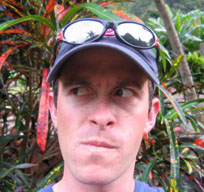Robert Pilz
2005
Open gallery

In rainy Portland, forgetting that more than half of Oregon’s land area is desert is easy. While the Willamette and Columbia Rivers always look full of water, the flows in rivers on the east side of the Cascades routinely dwindle, sometimes to nothing, late in the summer. Anadromous fish such as Steelhead and Fall-run Chinook salmon rely on late summer flows to reach their breeding grounds and successfully reproduce. Much of the scarcity of water in Eastern Oregon rivers stems from withdrawals of water by farmers and ranchers for irrigation and other uses. On one hand, these withdrawals sustain an important way of life in rural communities. However, this often comes at the expense of fish. The key to bridging this divide between a deeply rooted way of life and conservation of fish species is finding creative, cooperative solutions that benefit both sides. The Oregon Water Trust works with willing landowners, using various legal “tools” to find solutions that result in more water instream for fish while simultaneously encouraging ranchers and farmers to continue their way of life. The most common method the Trust employs is purchasing or leasing water rights from landowners at a price meant to replace income lost when the landowner forgoes use of their water. Once the Trust controls the water right, it is transferred to an “instream” right, resulting in more water for fish. I spent my summer at the Trust filling a variety of roles ranging from researching specific water law issues to drafting legal documents in support of water right transfers and cancellations. I also researched existing water rights on the Upper John Day River to help the Trust identify ecologically important water rights for possible future acquisition. Working at the Trust was a fulfilling experience that increased both my knowledge of water law and my desire to pursue a career in the field.
More Public Interest Law Project (PILP) Stories
Public Interest Law Project (PILP) is located in McCarty Classroom Complex.
MSC: 51
email pilp@lclark.edu
voice 503-768-6782
fax 503-768-6729
President: Natalie Hollabaugh
Auction Directors: Faith Fox & Hanah Morin


